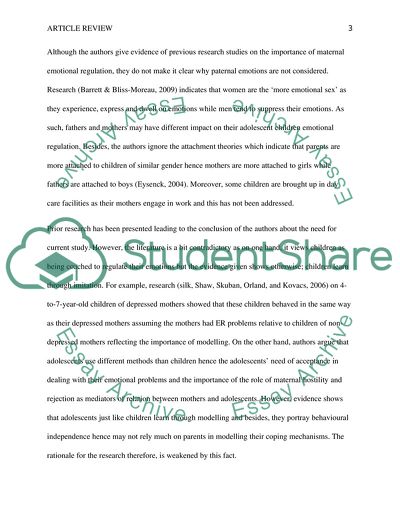Cite this document
(Warm and Harsh Parenting as Mediators of the Relation Between Maternal Article, n.d.)
Warm and Harsh Parenting as Mediators of the Relation Between Maternal Article. https://studentshare.org/psychology/1825183-critique-of-this-published-articlesarta-d-grusec-je-genz-t-2013-warm-and-harsh-parenting-as-mediators-of-the-relation-between-maternal-and-adolescent-emotion-regulation-journal-of-adolescence-36-1093-1011
Warm and Harsh Parenting as Mediators of the Relation Between Maternal Article. https://studentshare.org/psychology/1825183-critique-of-this-published-articlesarta-d-grusec-je-genz-t-2013-warm-and-harsh-parenting-as-mediators-of-the-relation-between-maternal-and-adolescent-emotion-regulation-journal-of-adolescence-36-1093-1011
(Warm and Harsh Parenting As Mediators of the Relation Between Maternal Article)
Warm and Harsh Parenting As Mediators of the Relation Between Maternal Article. https://studentshare.org/psychology/1825183-critique-of-this-published-articlesarta-d-grusec-je-genz-t-2013-warm-and-harsh-parenting-as-mediators-of-the-relation-between-maternal-and-adolescent-emotion-regulation-journal-of-adolescence-36-1093-1011.
Warm and Harsh Parenting As Mediators of the Relation Between Maternal Article. https://studentshare.org/psychology/1825183-critique-of-this-published-articlesarta-d-grusec-je-genz-t-2013-warm-and-harsh-parenting-as-mediators-of-the-relation-between-maternal-and-adolescent-emotion-regulation-journal-of-adolescence-36-1093-1011.
“Warm and Harsh Parenting As Mediators of the Relation Between Maternal Article”. https://studentshare.org/psychology/1825183-critique-of-this-published-articlesarta-d-grusec-je-genz-t-2013-warm-and-harsh-parenting-as-mediators-of-the-relation-between-maternal-and-adolescent-emotion-regulation-journal-of-adolescence-36-1093-1011.


